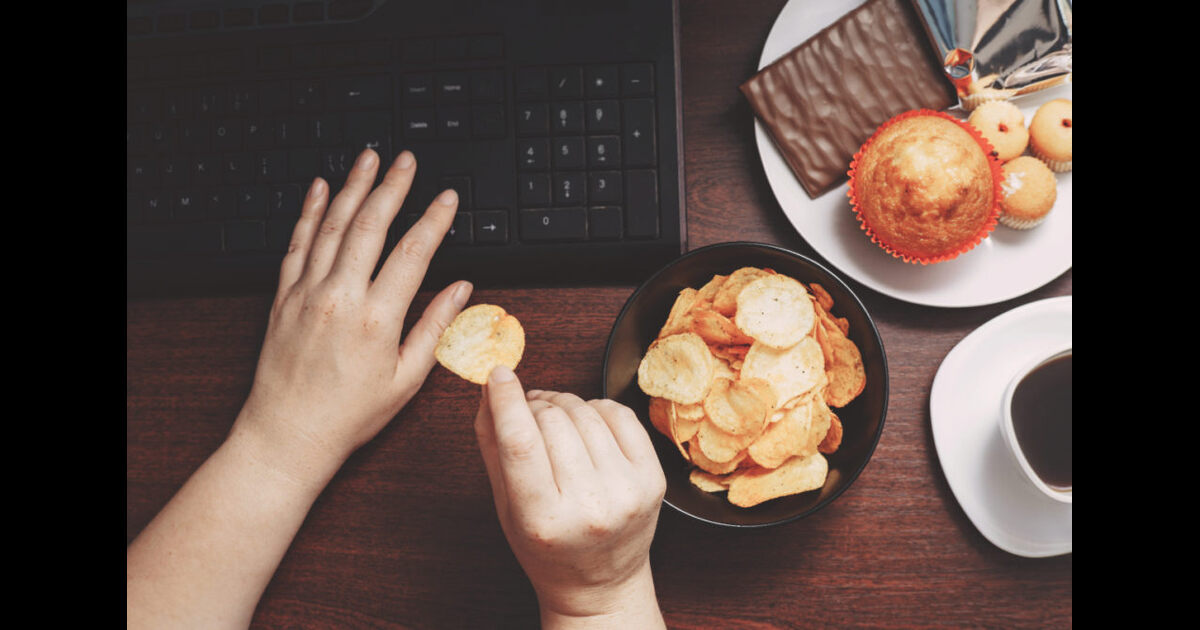Excessive snacking while working from home may be contributing to expanding waistlines, with a new survey from the diet tracking app MyFitnessPal revealing that, on average, remote workers consume an additional 800 extra calories a day and take 3,500 fewer steps per day compared to office days.
Excessive Snacking: Eating 800 Extra Calories A Day While Working From Home
The proximity of the fridge to the home office setup makes it easy for individuals to mindlessly munch on snacks like chips, cookies, and crackers while remaining sedentary. Unlike the office environment, where people typically have designated meal and snack times, the home offers constant access to a full kitchen, leading to increased snacking.
Among the 2,000 hybrid workers surveyed, 36% admitted to snacking even when they weren’t hungry, and 60% confessed to making less healthy food choices at home. Participants logged their food intake and step counts during work-from-home days, and the data was compared to their office-day habits.
The results revealed that, on average, remote workers consumed 2,752 calories per day, which is 791 calories more than a typical office day. Additionally, they took an average of 4,518 steps, just over half of what they would typically walk during an office day.
To address the issue of excessive snacking, experts recommend several strategies. First, they suggest pausing before eating to assess hunger levels.
Scheduled non-food breaks can help break the cycle of constant snacking, and taking a genuine lunch break away from work can prevent mindless eating.
Practicing mindful eating, even if only for a few minutes, can help individuals focus on the sensory aspects of their food.
While the quality of snacks matters, overindulging in even nutrient-dense foods can lead to calorie excess and weight gain. Hidden calories can be found in seemingly innocent snacks like chocolate-covered rice cakes, granola, nuts, and even that afternoon latte with skim milk.
For instance, consuming flavored yogurt, lightly salted chips, hummus with crackers, and chocolate-covered rice cakes can add up to nearly 830 calories. Researchers have also suggested that snacking on high-quality, nutritious foods earlier in the day is more favorable for health, as late-night snacking tends to be less beneficial.
In conclusion, the convenience of remote work and easy access to the kitchen can lead to excessive snacking and reduced physical activity, contributing to weight gain.
Employing mindful eating practices, scheduling non-food breaks, and opting for nutritious snacks can help combat this issue and promote healthier habits for remote workers.








Leave a Reply
You must be logged in to post a comment.